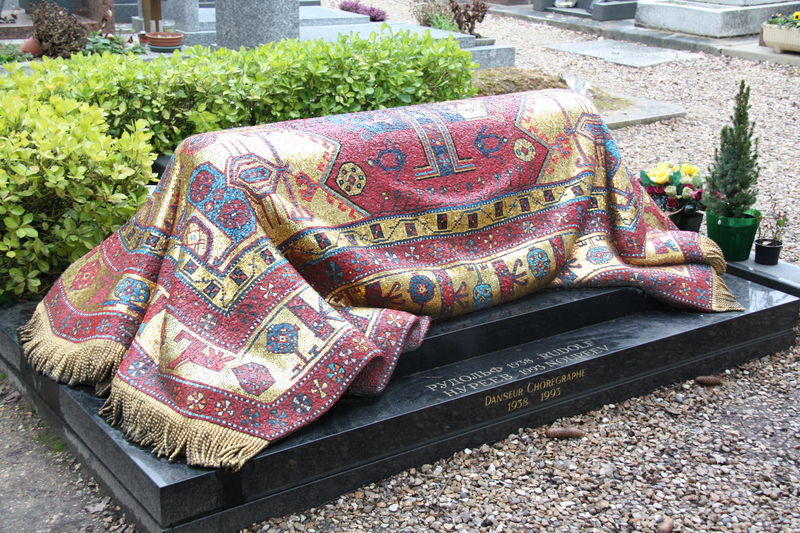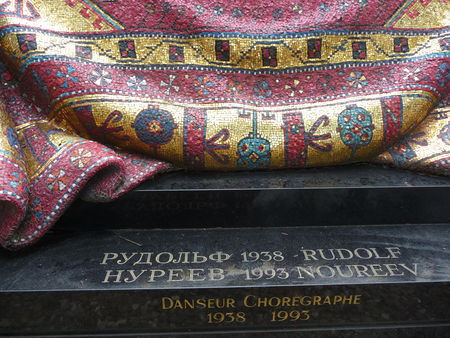 |
| photo: kinettelamossa |
There has always been cross-over and borrowing in the decorative arts. The links between mosaic and textile motifs are evident, particularly in Byzantine and Coptic art.
Author and archeologist, Gabriel Millet, called mosaics colorful, durable carpets for all eternity.
The comparison couldn't be more fitting for today's post.
Ezio Frigerio chose to create an amazing modern mosaic that imitates not just the pattern, but the folds, drape, and rich colors of a rug, for the funerary sculpture he was commissioned to design for Rudolf Nureyev.
Author and archeologist, Gabriel Millet, called mosaics colorful, durable carpets for all eternity.
The comparison couldn't be more fitting for today's post.
Ezio Frigerio chose to create an amazing modern mosaic that imitates not just the pattern, but the folds, drape, and rich colors of a rug, for the funerary sculpture he was commissioned to design for Rudolf Nureyev.
 |
| photo: kinettelamossa |
The sculpture, an armature of metal with bronze fringe covered with mosaic, drapes Nureyev's tomb in the Russian cemetery of Sainte Genevieve Sous Bois south of Paris. Frigerio was Nureyev's set designer and a friend who knew him well. He wished the design to be very personal and had the idea of a big multicolored carpet to drape the tomb with “all the suggestions of Oriental art that were so close to the spirit and profound nature of his great departed friend.”*
Nureyev was an enthusiastic collector of carpets and textiles and the association of rugs with a nomadic lifestyle seemed appropriate for the legendary dancer exiled from the USSR. From his very first entrance into the world, he was already in movement when his mother gave birth to him aboard a Trans-Siberian train skirting the sparkling Lake Baikal in southern Siberia.
Frigerio was inspired by a Caucasian rug in Nureyev’s collection. It was one of his favorites and one that he chose to take with him when he travelled. Even in his final days of suffering from AIDS, he brought his rugs with him to his Li Galli island retreat near Amalfi.
Rudolf Nureyev funerary sculpture
1996, Studio Akomena in collaboration with the Paris Opera
* the story of of the sculpture told by Sabina Ghinassi
1996, Studio Akomena in collaboration with the Paris Opera
* the story of of the sculpture told by Sabina Ghinassi


Although I was very familiar with Nureyev's residence and his admiration for nomadic textiles and rugs, I had never seen his grave. It is a handsome and fitting tribute.
ReplyDeleteNureyev--a light gone too soon. 20 years have passed in a heart beat.
ReplyDeleteMary